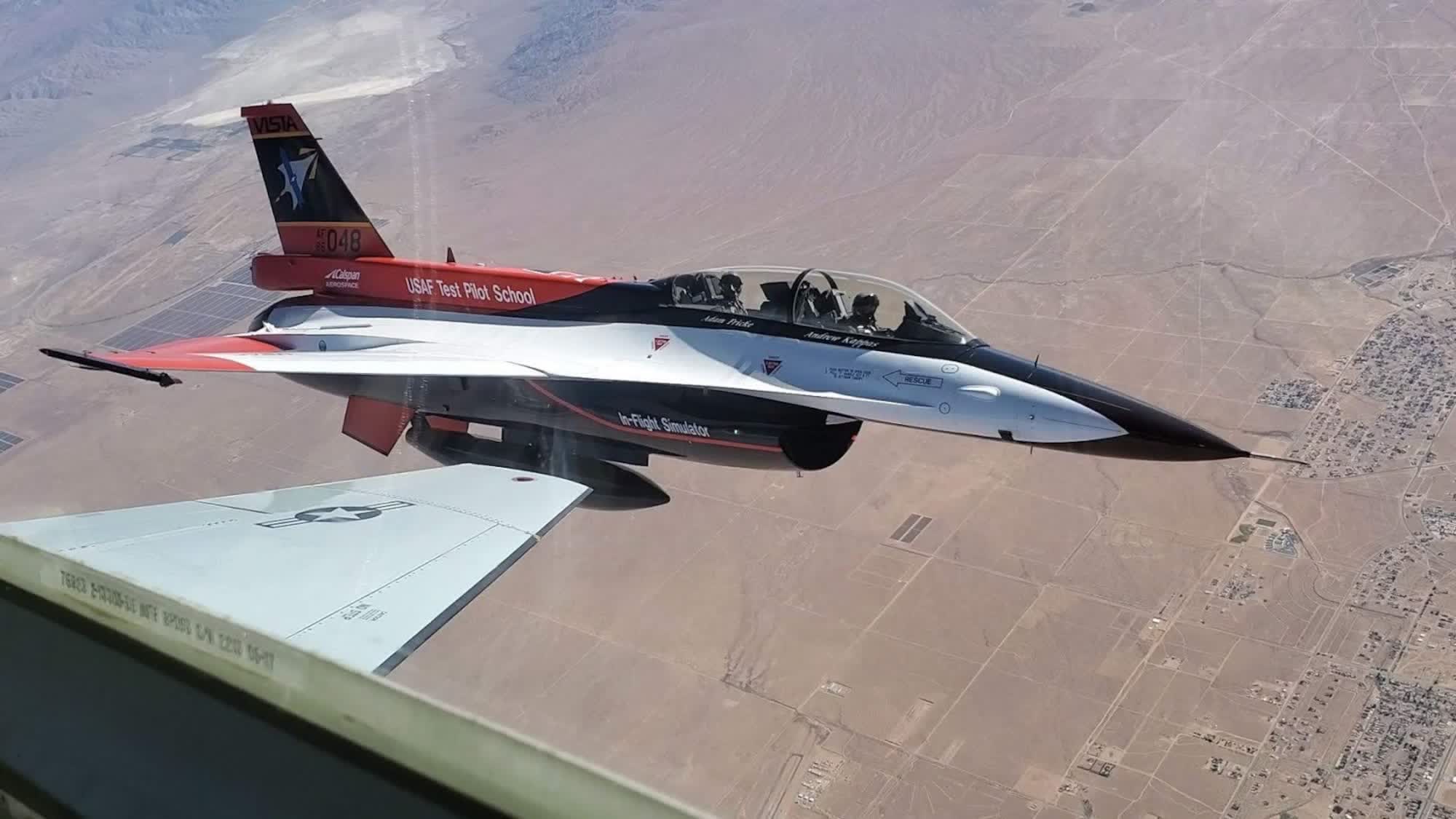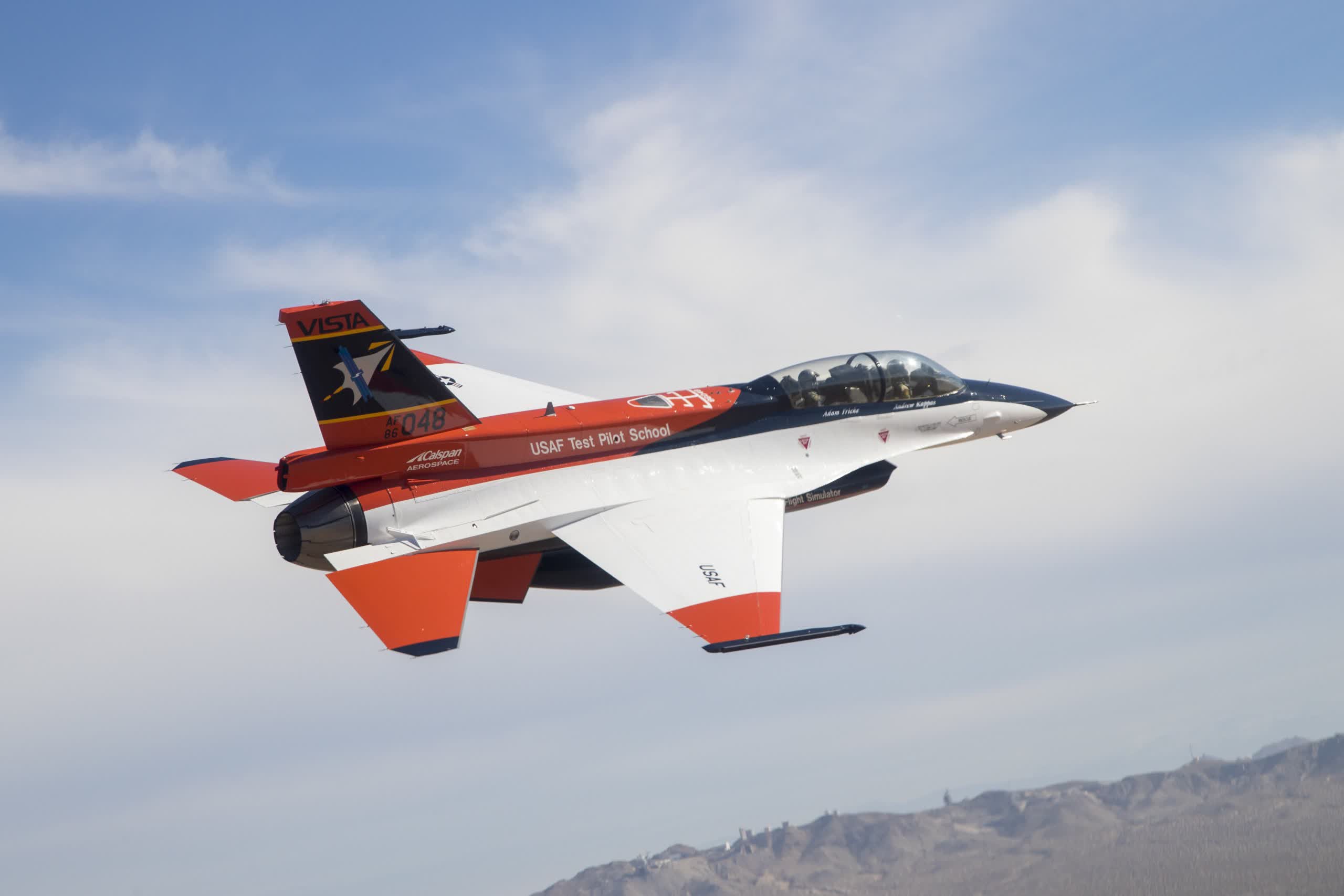In a nutshell: The US Air Force already has some of the most advanced fighter jets on the planet. It is now set on implementing sophisticated AI systems into its fleet that can not only fly the plane, but can also execute short- and long-range combat. The systems were already successfully tested late last year.
On December 1, 2022, a state-of-the-art AI piloted an Air Force fighter jet for the first time. The system didn't just take off, fly, and land the plane. It also engaged in advanced tactical drills and a simulated dogfight over Edwards Air Force Base in California.
The autonomous fighter jet is a modified F-16 codenamed VISTA X-62A. Part of the Air Force's "Skyborg" program, its codename is short for Variable In-flight Simulation Test Aircraft, but it wasn't always an AI-flown plane.
It started life as an Air Force flight simulator in the 1980s. It remained the military branch's go-to pilot training simulator clear through the early 1990s primarily because of its versatility. Its open architecture allowed technicians to fit it with components and software to mimic the performance of almost any plane, from a bomber to an ultra-light fighter. Later, the Air Force implemented various systems from military contractors, including Lockheed Martin's Skunk Works and General Dynamics.
Skunk Works supplied a "model following algorithm" (MFA) and a "system for autonomous control of the simulation" (SACS). General Dynamics developed an "Enterprise-wide Open Systems Architecture" (E-OSA), which tied together various components like the Enterprise Mission Computer version 2 (EMC2, or "Einstein Box"), the SACS, Getac tablet displays, and robust security features.
Engineers designed the E-OSA to be open and easily upgradeable to take advantage of rapid AI advancements. In 2022, VISTA received two sophisticated AI software suites: the Air Force Research Laboratory's Autonomous Air Combat Operations (AACO) and DARPA's Air Combat Evolution (ACE). The AACO system handles single-adversary BVR (beyond visual range) combat, while ACE manages closeup dogfights.
Between December 1 and December 16, VISTA completed 12 test flights and logged more than 17 hours of flight time. DARPA was tightlipped about most of the AI's training but mentioned that the algorithms had many hours of simulated missions before being implemented into the plane for live testing.
Despite its extensive virtual training, VISTA still requires a pilot in the rear cockpit as backup and a technician in the front to handle any malfunctions that might occur. Officials did not specify details of the jet's test flights, only saying they were successful with minor bumps.
The effectiveness of the test flights has the Air Force anxious to install AACO and ACE systems into its entire fleet as soon as possible. The Defense Department says that the AI suites are not meant to replace human pilots but to supplement their skills.

"We're not trying to replace pilots; we're trying to augment them, give them an extra tool," said USAF Test Pilot School's Research Director Christopher Cotting. Cotting used mounted calvary to explain. "The horse and the human had to work together. The horse can run the trail really well, so the rider doesn't have to worry about going from point A to B."
One example of computer-controlled jets being useful is when the pilot becomes incapacitated. If knocked unconscious or killed, as long as the aircraft is still functional, it can maneuver and fight to a safe landing. Additionally, the cockpits can be replaced with a customized nose section for missions that don't necessarily require a human pilot, like renascence flights.
Aside from the Air Force's plans to expand AI systems into the rest of its aircraft, the future of the VISTA jet is in training. Just as it was used to train pilots in a virtual setting, the craft will now serve as a tool for giving human pilots flight time and experience using the AACO and ACE systems. So in a sense, VISTA has come full circle to its roots.
